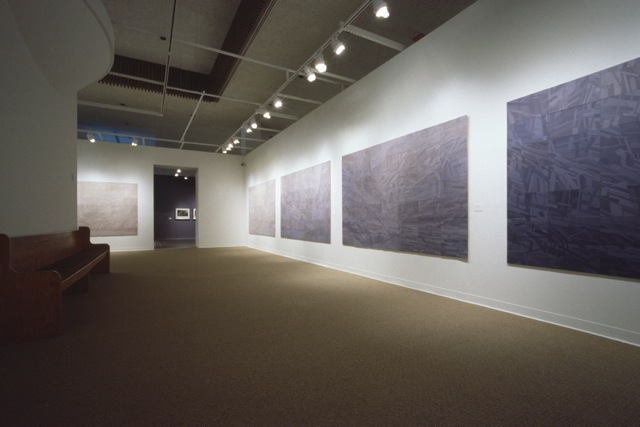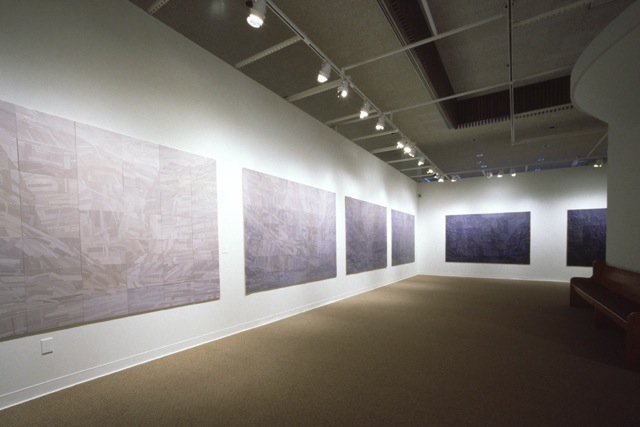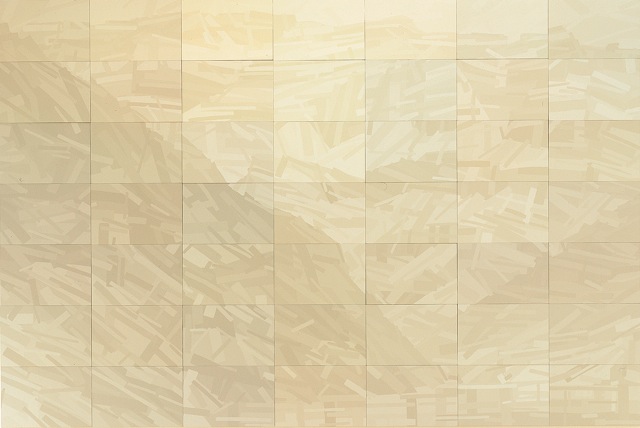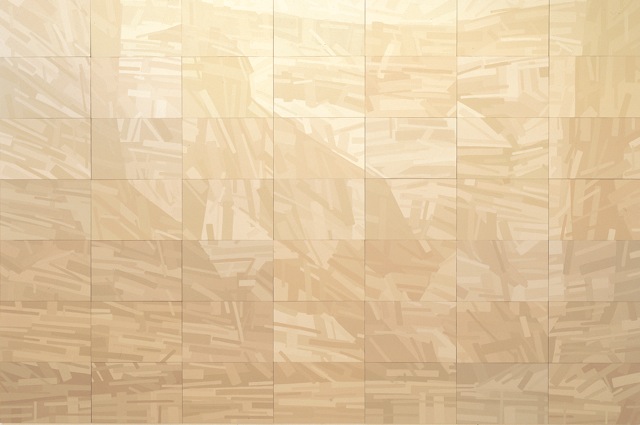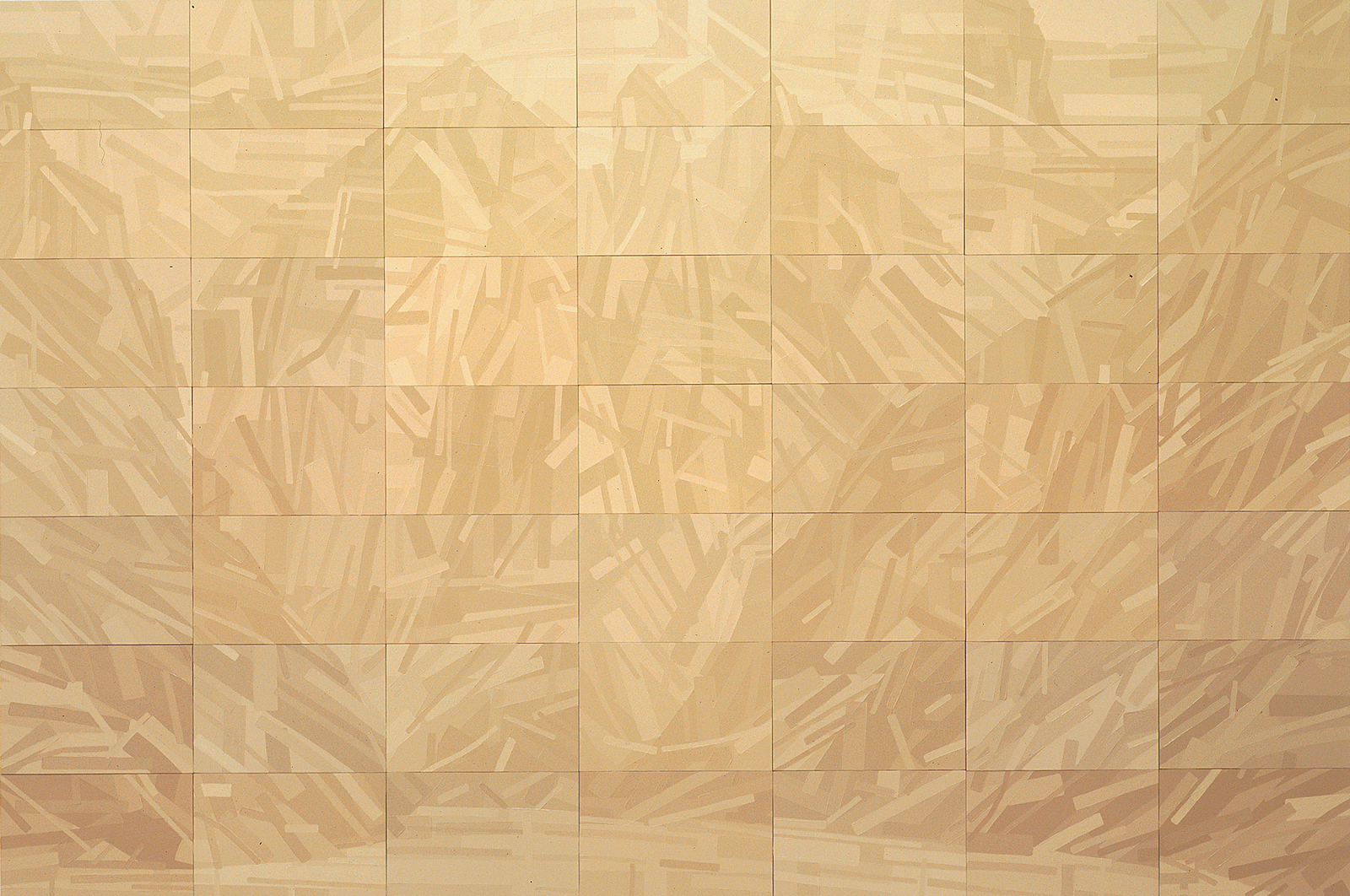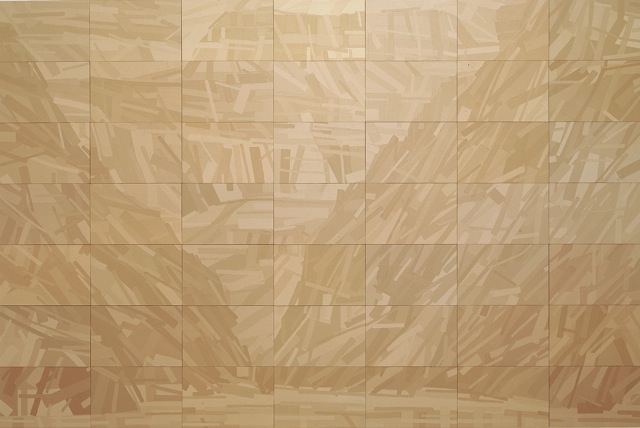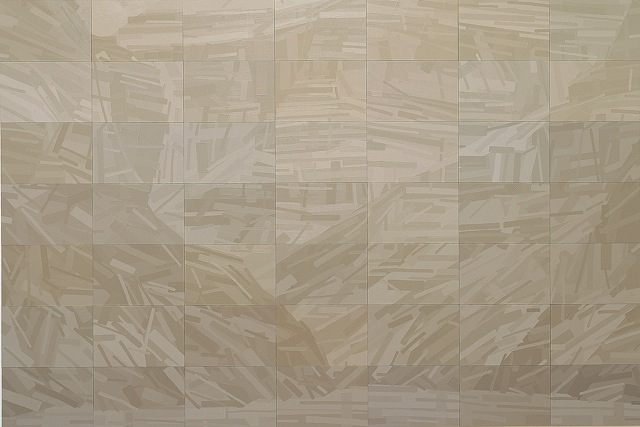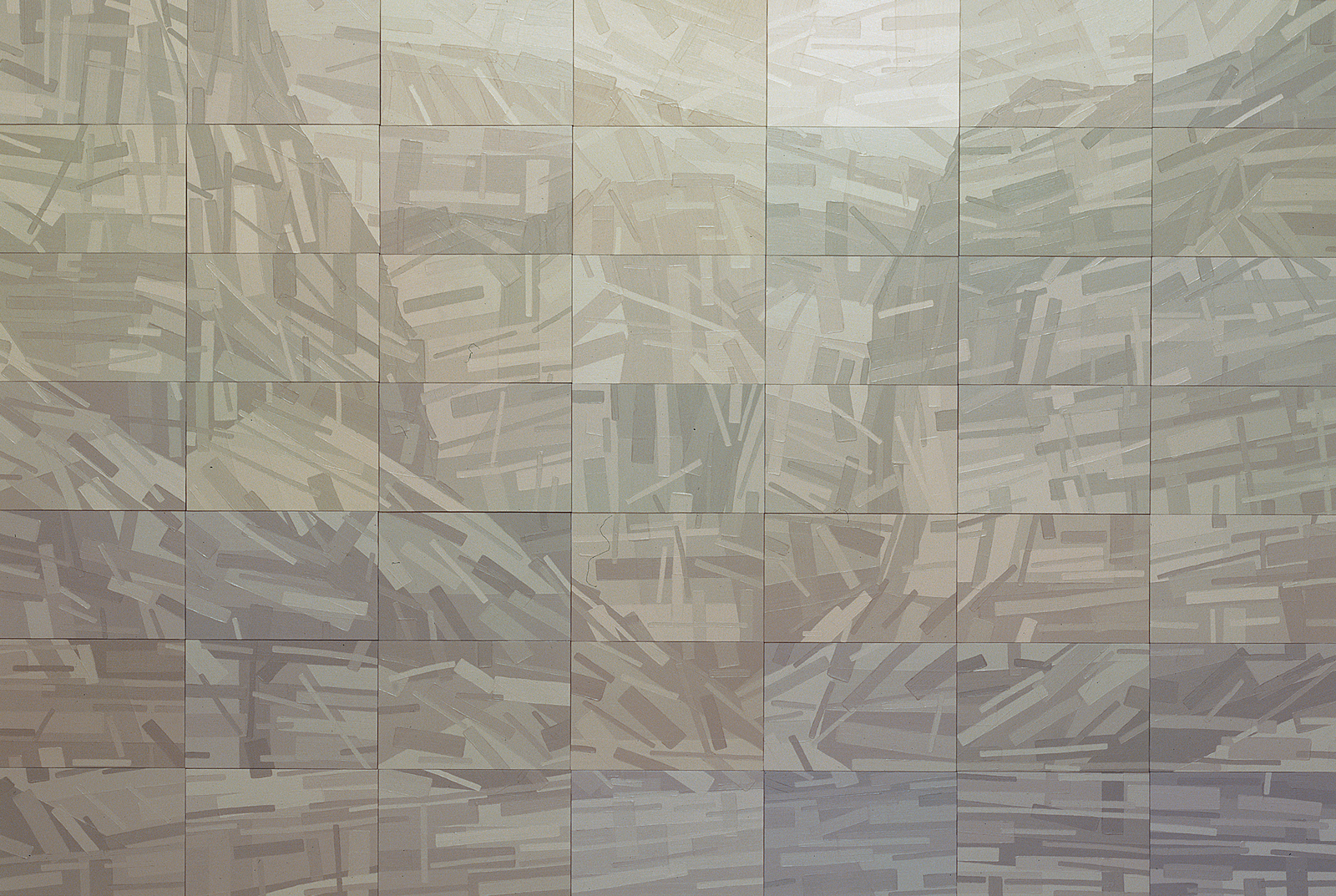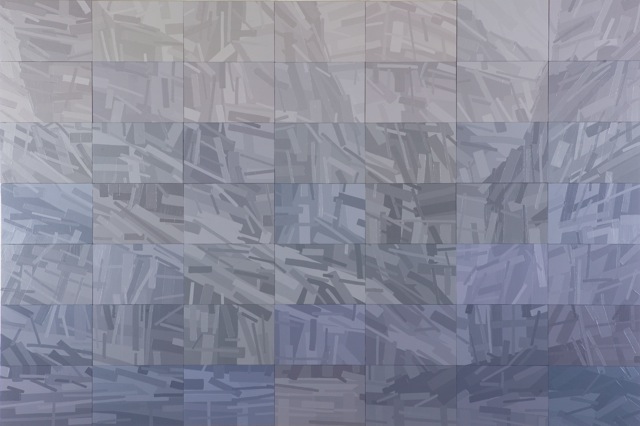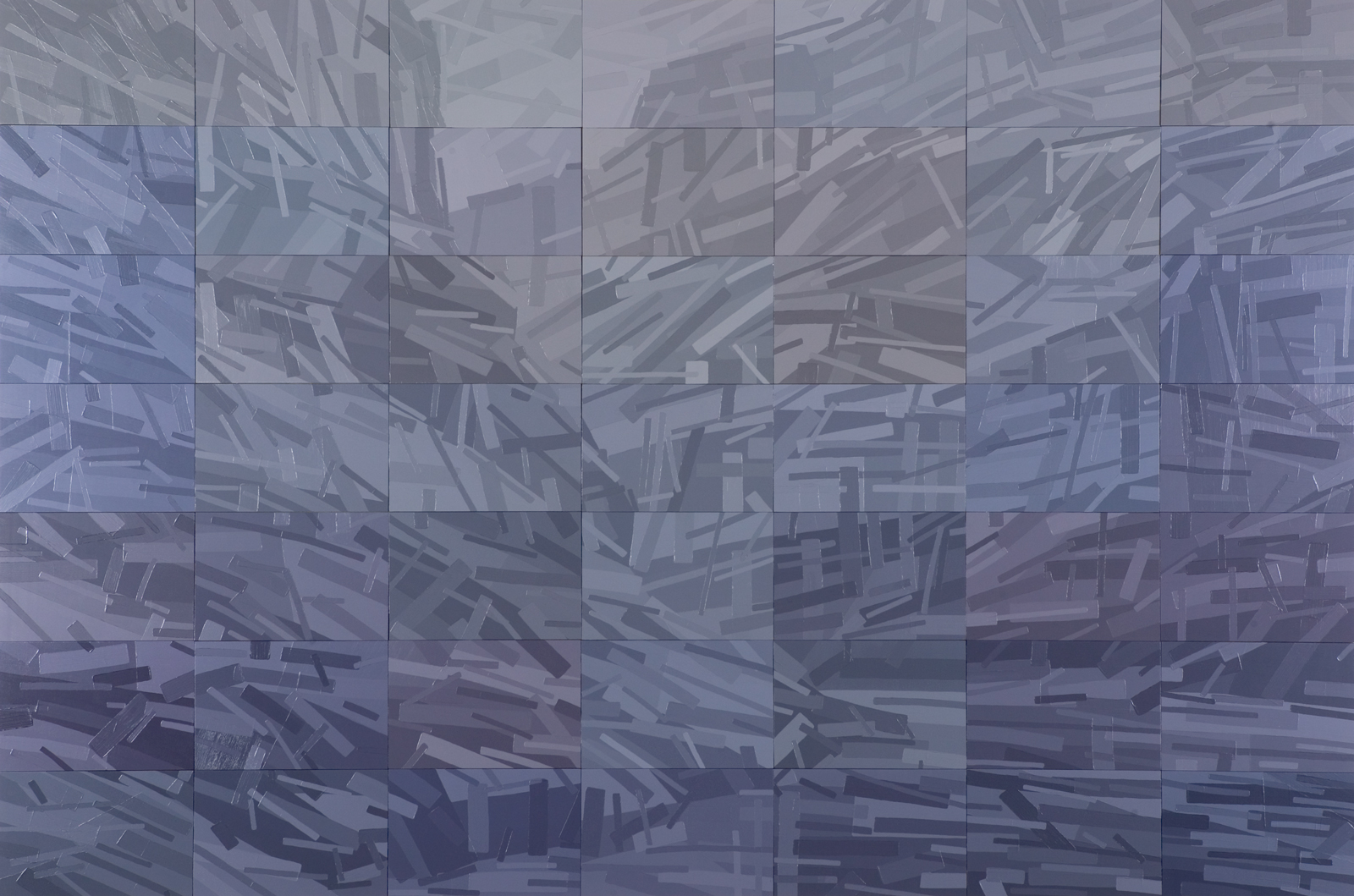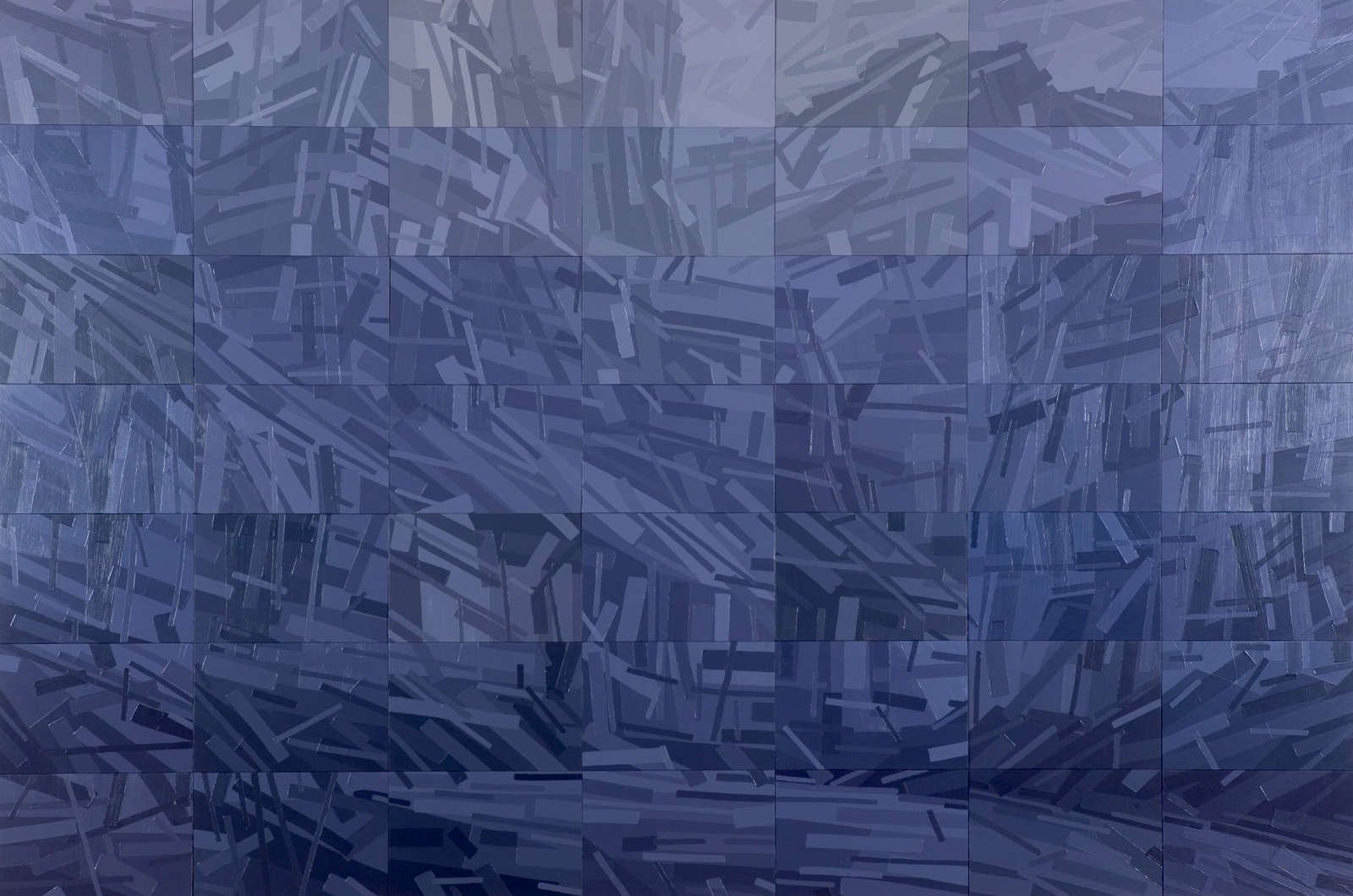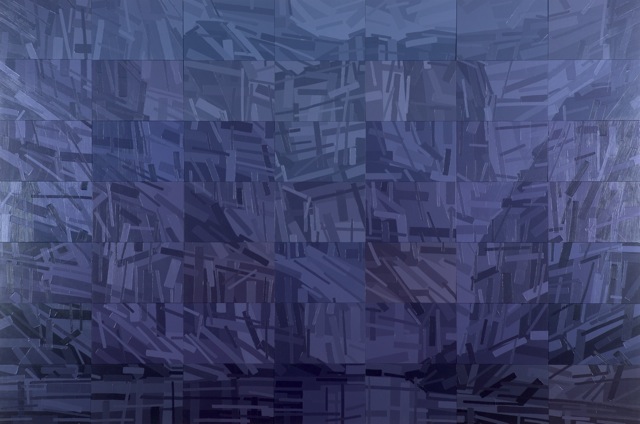Scanning the Grand Canyon
Austin Museum of Art and Galveston Arts Center
2004-5
Thirteen acrylic on wood paintings.
Each painting: 70”x105”, divided into a grid of 49 panels of 10”x15” each.
637 panels total.
The series Scanning the Grand Canyon consists of thirteen paintings. Each painting represents an hour from noon to midnight and is based on an individual photographic image taken while rafting through the canyon. “Noon” is flushed with light while “Midnight” is flushed with darkness. Every painting (1 p.m., 2 p.m., 3 p.m., etc.) is a degree darker than the previous painting. Each panel is a unique color representing subtle shifts in lighting within the image.
The Canyon series begins during a rafting trip I experienced down the Colorado River through the Grand Canyon. Representing specific geologic time scales, biological and ecological sciences, human histories of Native American cultures and Euro-American exploration, and finally commercial tourist enterprises, the spectacular nature of the Grand Canyon presents challenging and varying visual interpretation.
The trip is a 280-mile adventure. Digital cameras are my sketchbooks. Time transforms in the most visually literate way through the stratigraphy of the canyon walls, the running river, the movement of the burning sun and cool moon between the canyon walls. The appearance of Vishnu Schist at mile 77 exposes the oldest and deepest slice of canyon layers: 1.7 billion years old.
A bit over 100 years ago, John Powell was the first Euro-American tourist to raft down the Grand Canyon. He had only one arm, uncomfortable wooden boats, a few daredevil men and courage. It was a difficult journey. Now it takes a telephone call, a charge card and a yearlong reservation. A dam controls the flow of the river while the Parks Department controls the number of people. Whole families are riding the level 10+ rapids. There are kayaks, rowboats, rafts and motorized pontoon boats. The river guides negotiate the limited camping spaces. After two planes crashed in the canyon several years ago, air traffic is prohibited to emergencies only. At the end of the Canyon, motorboats carry us across Lake Mead where we are met by buses headed to Las Vegas. At breathtaking speed, memories of the Grand Canyon morph into the fake volcanoes and Egyptian pyramids of Las Vegas.
The Canyon extends my investigation into the ephemeral qualities of light, form, movement and time. Beyond the spectacle of the Grand Canyon are more subtle qualities and quantities of time, movement and distance. The canyon’s dramatic display of geological time provides a prehension of more discrete elements of the changing nature of land. It is a stage to explore visual complexities such as time passing, intensity of experience and movement through the distance between points.
SELECTED MEDIA
Time is of the Essence: Contemporary Landscape Art by Ann Batchelder. Published in CatchFire in 2012.

